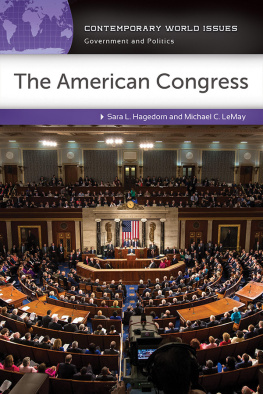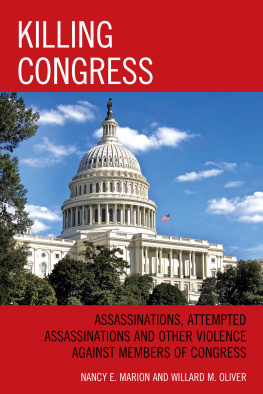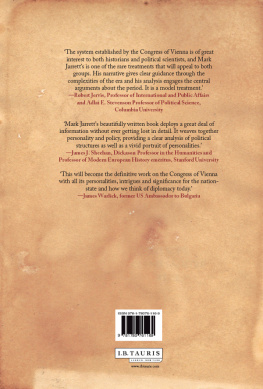Routledge Revivals
The Rise and Growth of the Congress of India
First published in 1938, this book aims to provide a history of the rise and growth of the Indian National Congress for the general reader, covering the period from its foundation in 1885 until the beginning of the non-co-operation movement in 1920. It was intended to extend the official history of the Congress by Pattabhi Sitarammayya by making it more accessible to western readers while also giving more space to the religious and social forces in Indian history during the nineteenth century which led to the birth of the congress. It also looks at forerunner organisations like The British Indian Association before examining the history and evolution of the congress in several phases.
First published in 1938
by George Allen & Unwin
This edition first published in 2017 by Routledge
2 Park Square, Milton Park, Abingdon, Oxon, OX14 4RN
and by Routledge
711 Third Avenue, New York, NY 10017
Routledge is an imprint of the Taylor & Francis Group, an informa business
1938 C.F. Andrews & Girija Mookerjee
All rights reserved. No part of this book may be reprinted or reproduced or utilised in any form or by any electronic, mechanical, or other means, now known or hereafter invented, including photocopying and recording, or in any information storage or retrieval system, without permission in writing from the publishers.
Publishers Note
The publisher has gone to great lengths to ensure the quality of this reprint but points out that some imperfections in the original copies may be apparent.
Disclaimer
The publisher has made every effort to trace copyright holders and welcomes correspondence from those they have been unable to contact.
A Library of Congress record exists under LC control number: 96910530
ISBN 13: 978-1-138-22208-3 (hbk)
ISBN 13: 978-1-315-40550-6 (ebk)
The Rise and Growth of the Congress in India
by
C. F. ANDREWS
and
GIRIJA MOOKERJEE
London
George Allen & Unwin Ltd
FIRST PUBLISHED IN 1938
All rights reserved
PRINTED IN GREAT BRITAIN BY
UNWIN BROTHERS LTD., WOKING
DEDICATED TO
SUBASH CHANDRA BOSE
CONGRESS PRESIDENT
1938-39
O UR object in writing this book has been to describe in a popular form for the general reader the rise and growth of the All-India National Congress. We have brought the present volume to an end with the year 1920, when the Non-co-operation Movement began, and have thus left over the more recent events for a second volume if the public interest is sufficient to demand it.
The official history of the Congress has already been published in India by Dr. Pattabhi Sitarammayya at the time of the Congress Jubilee Celebrations in 1935. Our own aim has been to supplement this very full and well-documented work with a volume which could be more easily read by the general public, especially in the West. We have also given much more space to those religious and social forces in Indian history, during the nineteenth century, which led up to the birth of the Congress in the year 1885.
After careful consideration we decided to conclude the present volume with the year 1920 for three reasons:
(1) An entirely new phase of Indian political life began at this dividing line. The leadership of Mahatma Gandhi, from this time forward, has remained very nearly constant.
(2) The events that followed Non-co-operation in quick succession are too recent for a wholly dispassionate and objective account to be given of them. There is an abundance of material ready for any future historian. Autobiographies have been written, such as the remarkable story of Jawaharlal Nehrus life, and there have been recently published a very large number of special studies. India came into the limelight of world history during the Round Table Conferences and an immense amount of miscellaneous literature was then issued. All this may be sifted later; but the historical perspective is not yet clear to-day.
(3) To try to cover the whole period in a single volume seemed to us to be a wellnigh impossible task. We found it therefore better to close at a point where this new phase in Congress history began.
As a composite work of two authors, it needs to be explained that the earlier work of collecting the material was done by one of us (Girija Mookerjee) and its arrangement and revision have been carried out by the other (C. F. Andrews). Unfortunately during the last year we have been entirely separated from each other and even correspondence had become very difficult. The revision and final arrangement of the material had to be done without full discussion. But it may be added that previous consultation, while we were both together in England, has made it a comparatively easy task to keep the book in every respect a joint volume. Our grateful thanks are due to Dr. Pattabhi Sitarammayya, who generously gave us permission to make use of his Jubilee History, which is a mine of information. We have tried, at the same time, to keep our own independent judgment throughout with regard to the special period (18851920) with which alone we have dealt. We thank also Mademoiselle Croiet for her valuable help in the preparation of the materials. The book is now issued with an earnest hope that it may serve to promote friendship and understanding between India and Great Britain.
C. F. ANDREWS
GIRIJA MOOKERJEE
Contents
Part One
Indias Religious Renaissance
Chapter I
The Religious Background
T HOSE who have sought to describe the history of Indias political development have been used to take the year 1885, when the National Congress was founded, as their starting-point and in a sense they have been correct. But when they have gone on to regard the years preceding that date as politically barren, they have surely failed to take account of one immensely important factor. They have not realized the very intimate connection in India between the political field and the sphere of religious development.
For in India more than any other country we have always to notice those movements which spring directly out of the religious spirit of the people. One writer has even said that Indians are incorrigibly religious, and there is some truth underlying this extreme expression. For more than anywhere else in the world, politics and religion in India have become mingled together in such a way that they can hardly be separated, however much we may try to do so.
In this, as well as many other aspects, the India of countless villages and hamlets, scattered far and wide over the land, reminds us very forcibly indeed of the Middle Ages in Europe, where the same religious background is met with leading on to great political results. For in those mediaeval times, when the industrial city life had not yet been established and the country life with its handicrafts was still the centre of civilization and culture, this religious mind prevailed. We find great leaders of the Church, like Anselm and Bernard of Clairvaux, offering guidance in the affairs of State to emperors and kings. So mighty was the power of their spirit among the multitudes that even the royal leaders dare not disobey.
What has been thus stated in the widest terms of India as a whole is perhaps most true of all concerning Hindu India, though in vitally important respects it is correct also concerning Islam. For in Islam, as enunciated by the Prophet, religion actually rules the State. We can see this same tendency at work even in comparatively recent times, for in the north the Sikh Khalsa has shown us how the Indian mind works towards political and social freedom in and through a religious awakening. The history of the Arya Samaj, which will be referred to later, tells the same story, as does the extremely interesting development of the Radha Soami sect at Dayal Bagh.








